Keeping track of SEO trends is like hitting a moving target. From algorithm updates to evolving innovation, it can feel like the goalpost is always moving.
And while the goal of SEO remains the same — to boost your presence in relevant search results — the tactics for getting there look different from year to year.
Here, we’ll cover the top SEO challenges facing marketers in 2023 and the 25 biggest trends to watch this year.
![→ Download Now: SEO Starter Pack [Free Kit]](https://i4lead.com/wp-content/uploads/2023/04/1d7211ac-7b1b-4405-b940-54b8acedb26e-1.png)
SEO Challenges in 2023
25 SEO Trends to Leverage in 2023
SEO Challenges in 2023
A HubSpot Blogs survey identified the top three challenges of SEO marketing:
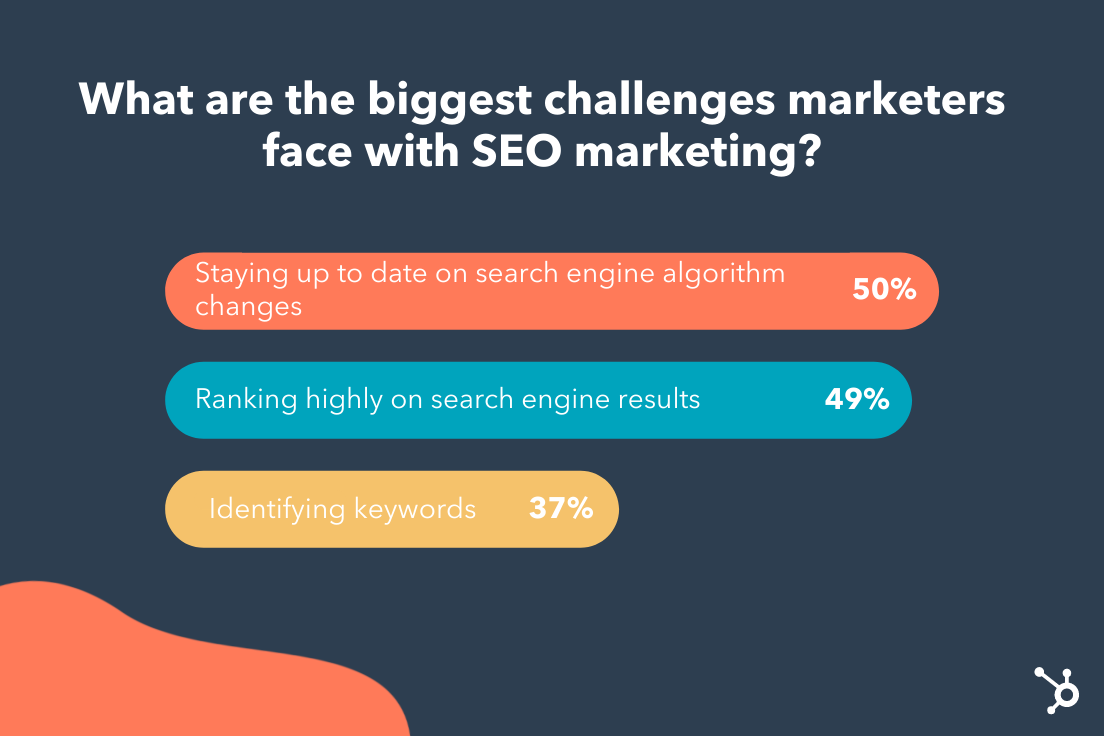 Image Source
Image Source
1. Algorithm Changes
The number one challenge for marketers is keeping up with algorithm changes. That’s unsurprising. In 2021 alone, Google ran more than 800,000 experiments that led to 4,000+ changes to search.
If you’re like most marketers, this stat can feel pretty overwhelming. After all, how can you succeed when Google keeps rerouting the path to success?
The key is to respond to these changes strategically. For one, this means staying on top of industry news. If there’s a significant algorithm change, the SEO industry will likely comment on it.
The second strategy may sound counterintuitive: Wait until the dust has settled after an update. Why? In some cases, Google discovers a change has not panned out as expected, and they revert back.
2. Not Ranking
SEO is a long-term game. Unlike paid search, organic results take time to show results. It’s usually a culmination of small efforts.
To use a metaphor, SEO is like a mutual fund slowly building over time. It’s not the stock market, where you see gains and losses in real time. This can be helpful to mention when clients expect quick results.
Some “solutions” to fix a low ranking include technical SEO and content marketing. However, developing a long-term strategy that focuses on three to four initiatives at a time is even more important.
3. Keyword Research
Keywords are the foundation of SEO. But today, rather than scanning for just a keyword, Google takes a high-level look at your website to get an overall sense of its tone, scope, and relevancy.
This means that keyword stuffing is out. Instead, the goal is to understand user intent, or the deeper problem your users hope to solve. With this understanding, you can perform better keyword research and write content based on this insight.
Check out this helpful article on how to add user intent to your keyword strategy.
25 SEO Trends to Leverage in 2023
1. Voice and Mobile Search
“Hey Google, what’s a good substitute for heavy cream?”
This was a question I asked my Google Assistant last week while baking a cake, hands covered in flour. It looks like I’m not the only one using voice search. By 2026, more than half of internet users in the US will use a voice assistant.
There’s no denying that voice search is becoming a part of our daily lives. But how can we optimize our content for people searching with their ears — not their eyes?
The answer is clear: Optimize your site for mobile. Since most voice searches occur on mobile and smart devices, it makes sense that Google prefers mobile-friendly sites with fast speeds.
Another strategy is reworking your content to include common questions users may ask. For example, identify long-tail question keywords and include them in your H2 or H3 headers.
2. Tightened Page Headers
In 2021, Google rolled out a new search ranking feature called Passages. This feature lets Google rank specific sections of a page (or “a passage”) semi-independently from the page itself.
In other words, instead of ranking an entire page on relevancy, Google will now score for relevance in specific sections of a page.
This change is no cause for alarm — assuming your pages are organized.
If not, it’s a good idea to tighten your page headers to provide more context for different sections, enabling Google to understand your content regardless of the markup.
Keep in mind that other page-ranking factors still apply. Don’t skimp on backlinks, SEO-optimized copywriting, and other ranking strategies.
3. Emotionally-Charged Headlines
Have you ever clicked on a headline that was too compelling to resist? Turns out, a lot of research has gone into identifying a formula for clickable titles.
According to one recent study that analyzed 5 million headlines, emotional titles — either positive or negative — had a higher click-through rate than neutral titles.
Titles with a positive sentiment had a 7.4% higher CTR, while those with a negative sentiment had a 7.2% higher CTR.
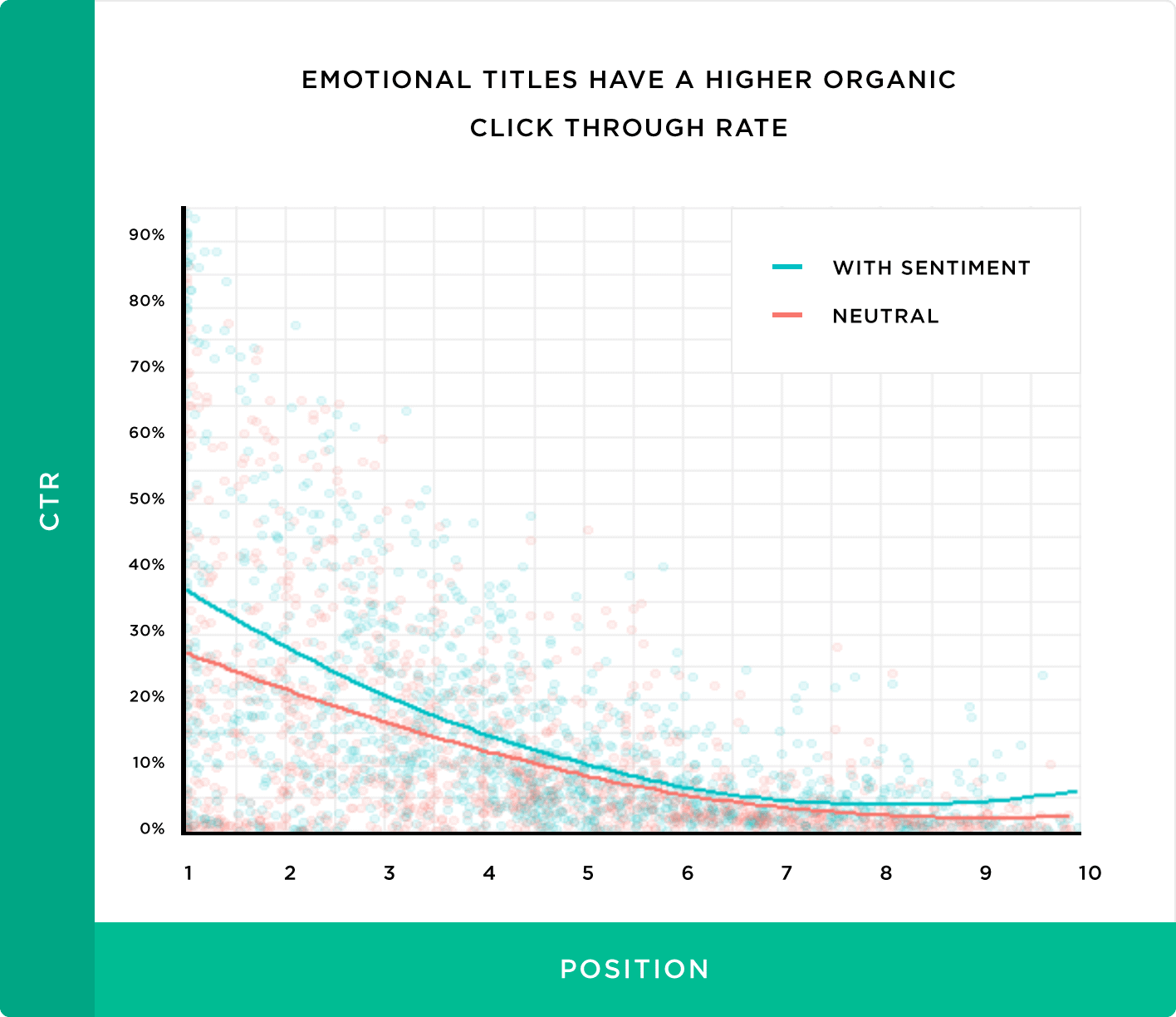 Image Source
Image Source
That said, emotionally-charged titles can drive clicks only to a point. Go any further, and you quickly enter clickbait-land.
For instance, the same study found that “power words” — or words specifically designed to grab attention — can negatively affect CTR.
Power words include terms like unbelievable, insane, and crazy. While these may work on social media, they can hurt your organic CTR. Use them sparingly, if at all.
4. Video in Search Results
You’ve likely come across a YouTube video in a Featured Snippet. These tend to appear for “how-to” searches where the reader is looking for step-by-step instructions.
For instance, imagine you’re stuck on the side of the road with a flat tire. One Google search for “How to fix a flat tire” will lead you to the following video:
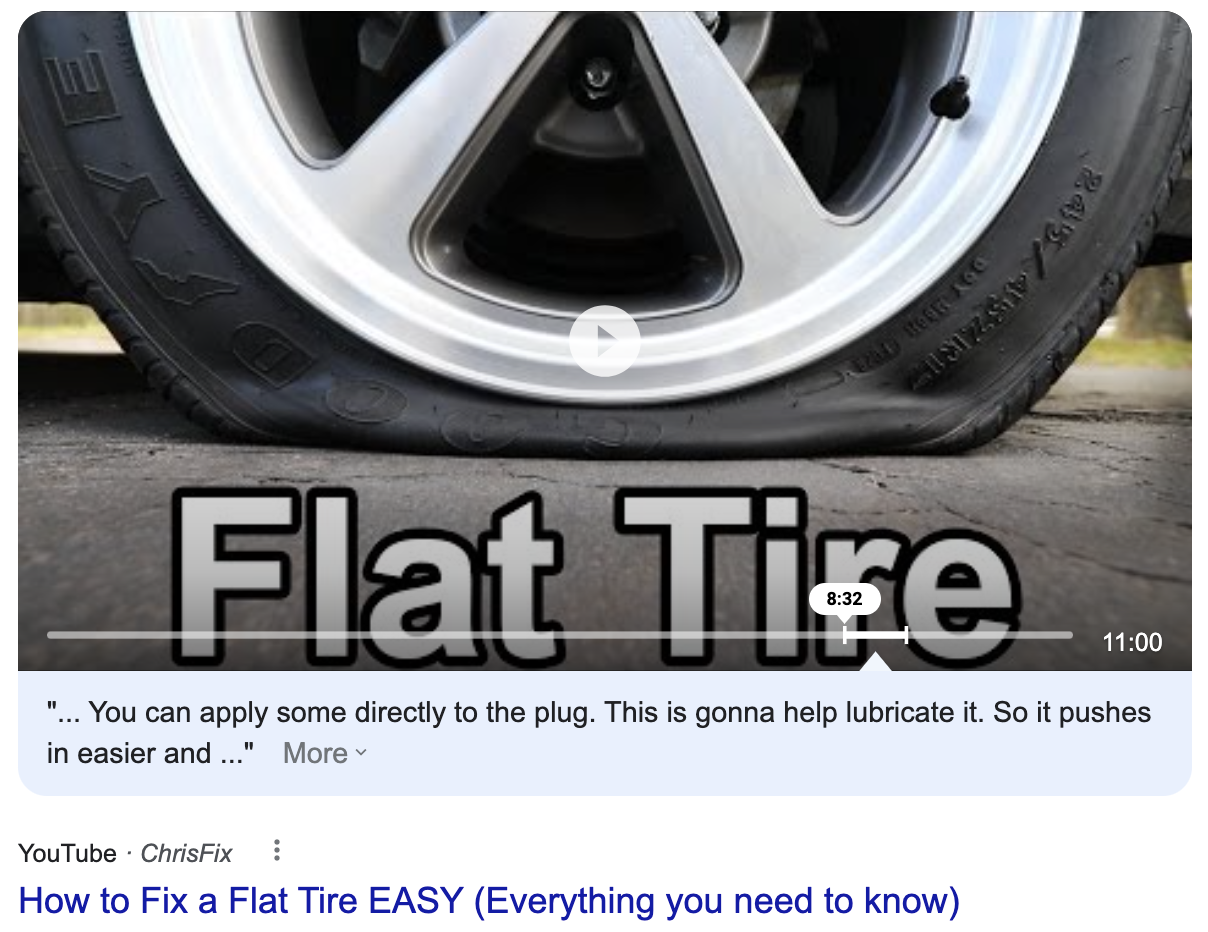 Image Source
Image Source
Video Snippets are just the beginning. We predict Google will continue to incorporate video into search results. With that in mind, optimizing your videos for search is essential.
Here are a few ways to get there.
- Add chapters to your YouTube videos. Chapters break up your video into sections, usually by topic. This layer of context allows viewers (and Google!) to understand the contents of a video.
It also makes it easy for Google to use different clips from your video for Featured Snippets.
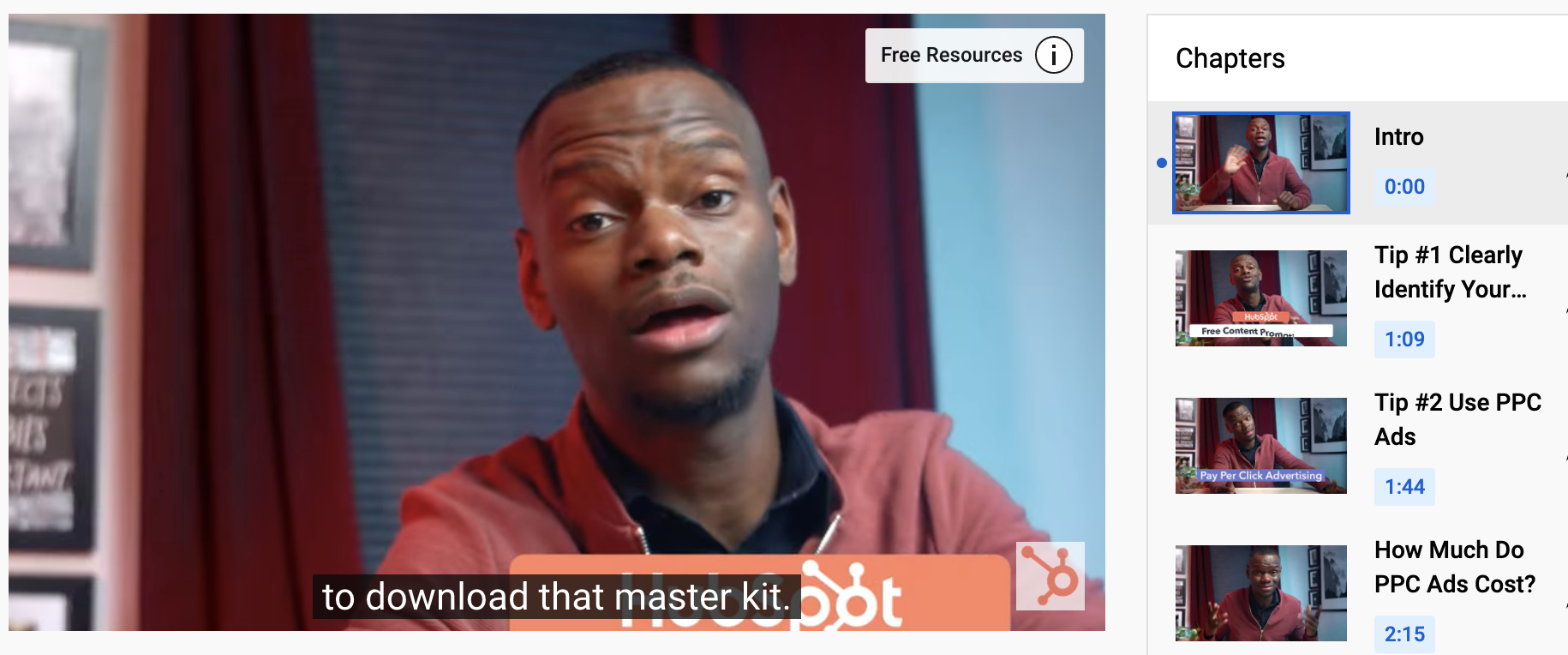 Image Source
Image Source
- Include closed captions (CC). Closed captions help YouTube and Google understand every word in your video. While YouTube can automatically generate captions, these aren’t always accurate, so adding your own manually is better.
- Optimize your title, tags, and description. Videos are like webpages — they have titles, descriptions (like meta descriptions), and tags (like meta tags). Optimize these using SEO best practices.
Lastly, it doesn’t hurt to embed videos into your website and blog posts, which can improve bounce rates.
5. Tweaking Content for “People Also Ask”
While browsing Google, you may have noticed something new: People Also Ask (PAA). In fact, 43% of search queries now include a PAA box.
 Image Source
Image Source
With a prominent position at the top of the SERP, everyone wants to rank in this highly-coveted feature. Luckily, you can increase your chances by making some minor tweaks to your content.
Since the majority of PAA boxes start with question words, like “what,” “why,” and “when,” it’s a good idea to incorporate questions and answers into your content.
You can use a keyword research tool to identify long-tail question keywords, then include these questions in your page headers.
Or, consider adding a FAQ section at the bottom of your web pages. Not only does this summarize key points for the reader, but it also has useful SEO benefits.
6. AI-Generated Content
AI content writing tools like Jasper and Copy.AI already gained traction last year, but none blew up the way ChatGPT did.
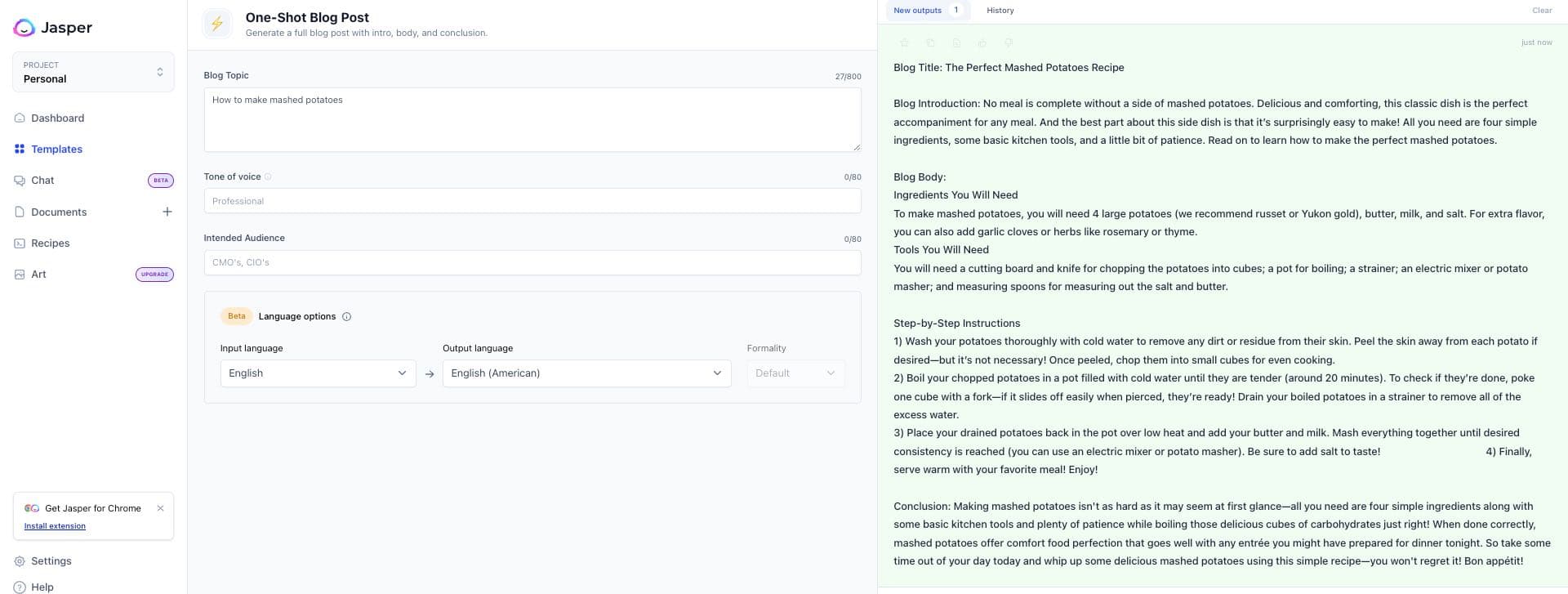
Now the fastest-growing consumer app in history, ChatGPT can help you create copy that reads almost as if a real person wrote it. In February 2023, Google countered with its own AI chatbot — Bard.
However, Google still attempts to squash AI content with its helpful content update. This update rewards content that gives users a satisfying experience, leading to the question: To what extent should you use AI?
Simple: Speed up your process, don’t replace it.
Thin long-form content entirely generated by AI will be difficult to pass. Instead, use AI to create short-form content like FAQs. Use it to create general content and infuse the gaps with your insights.
Incorporate AI into different stages of your content production process, such as research. AI is also useful in summarizing existing content. Take an existing piece of content and repurpose it for different channels.
And don’t completely rely on AI to create your copy. Supplement the production process with an experienced human writer who can edit and add valuable insights.
7. Digital Accessibility
Only 3% of the internet is currently accessible to people with disabilities. Accessibility isn’t yet a direct ranking factor for Google, but that doesn’t mean it might not be in the future.
Google Search Trends and Glimpse Trajectory highlighted how, in 2022, there was an increase in search demand for “digital accessibility” by +69% and “SEO accessibility” by +124%.
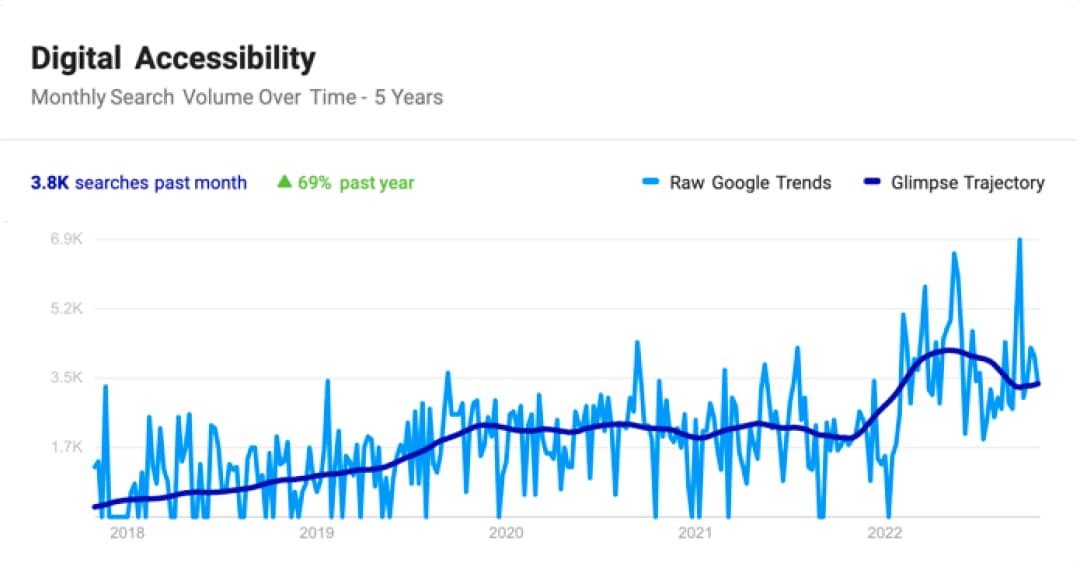 Image source
Image source
Accessible websites aren’t just good for SEO, they also help build reputational trust with users, generate more business, and improve customer experience.
Web accessibility is extensive. Use a checklist to identify any areas you may have missed. Review examples of other accessible content, and check the Web Content Accessibility Guidelines (WCAG).
Here are five ways you can improve the experience for all visitors:
- Include image alt-text that describes the image’s content.
- Optimize video content with closed captions and transcripts.
- Create headers and structure elements with HTML, not images.
- Add zoom and magnification capabilities.
- Test your website with an automated accessibility testing tool, such as Wave or DYNO Mapper.
And lastly, involve accessibility experts and users who can provide feedback on your design and content.
8. Featured Snippets and Zero-Click Results
“How to cure a fever.”
That’s what I Googled when I was down last week and didn’t know what to do.
My answer? A featured snippet from Mayo Clinic with no clicks necessary.

Of search queries, 12.29% have featured snippets in their search results. Additionally, two-thirds of Google searches end without a click, and the race for zero-click search domination is on.
Featured snippets and zero-click results will rule the SERPs. Users also have a higher chance of clicking content above the fold since they can see a preview of the answer.
Five tips to grab the featured snippet spot.
- Use relevant keywords. You want to include your primary keyword but also search for related keywords. Refer to content optimization tools for their suggestions, but also follow your own judgment.
- Add headers. Break your content into sections with H2 and H3 tags. These tags make it easier for search engines to crawl your content and identify points of interest.
- Keep it short. Limit content to 40 to 60 words. It might also help to include a “what is” header.
- Include a list. Featured snippets love lists. Include steps, recipes, or other relevant info in a numbered list.
- Format your content. The more your content looks like a featured snippet, the more likely it is to become one. Use tables and images when possible.
9. Topical Authority
Are you going to trust the website that talks about 50 vastly different topics or the one that focuses on just a few?
The answer is obvious — and that’s exactly why topical authority is crucial.
Topical authority signals to search engines the depth and quality of your content. When you focus your content around a specific topic, Google understands the expertise and trustworthiness of your website.
This expertise is especially crucial considering Google’s helpful content update. Topical authority tells the algorithm which content provides value and which it should rank higher.
Focus on topic clusters to build authority. Identify the topics you want to focus on, research related terms and phrases, and create content for each cluster.
Also, target multiple keywords at the same time to build online authority. Create content around a certain topic, link internally to other related pages, and cross-link between clusters.
In the example below, if you want to rank for the keyword “design software,” consider creating content around the clusters such as “design posts,” “graphic design examples,” “what laptop is best for graphic design,” or “tips for designing.”
Building topical authority is a time-intensive process that’s well worth the effort.
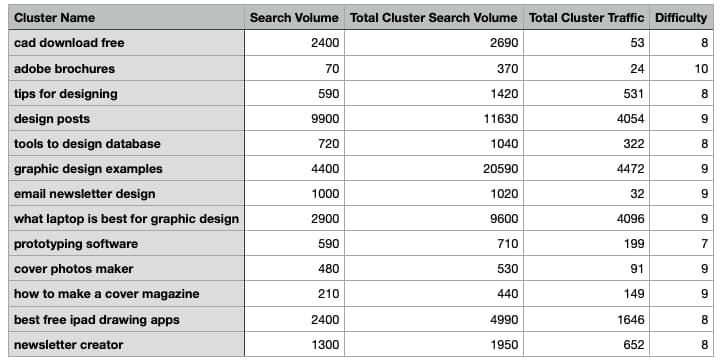
10. Firsthand Experience
Have you ever read an article and thought, “This person really doesn’t know what they’re talking about”?
That’s because the content didn’t come from firsthand experience, and Google’s ready to change that.
In December 2022, Google rolled out an update to its E-A-T (Expertise, Authority, Trust) algorithm and added another E for Experience.
The new E-E-A-T algorithm will now consider the author or creator’s experience when evaluating content quality.
With this additional ‘E,’ we’ll see content creators investing more effort to access practitioners or subject matter experts when creating search content.
Unique insights will become more critical. Whether in the form of original data, contrarian takes, content driven by subject matter expertise, or even content written from other perspectives, such as consumer reviews.
Such insights are challenging to replicate and will, in turn, result in greater returns in 2023.
When everyone has access to the same AI writing and keyword research, it’s the “hard” path of including unique insights that will become the most successful.
11. Content Optimization Tools
Ranking for SEO isn’t about stuffing your primary keyword a couple of times and calling it a day.
It’s about creating semantically rich content that explores a topic in-depth and provides value to the reader.
That’s where content optimization tools such as Frase, Clearscope, and SurferSEO come in.
These tools use Natural Language Processing (NLP) to analyze your content and offer suggestions on keywords, common phrases, subtopics, and frequently asked questions.
The suggestions they offer help search engine bots understand the context of your content and rank it higher.
Featured snippets, first-page rankings, and high visibility are all outcomes of optimizing your content. Here’s an example of how Surfer SEO’s Content Editor suggests optimizing content for the keyword “marketing insights.”
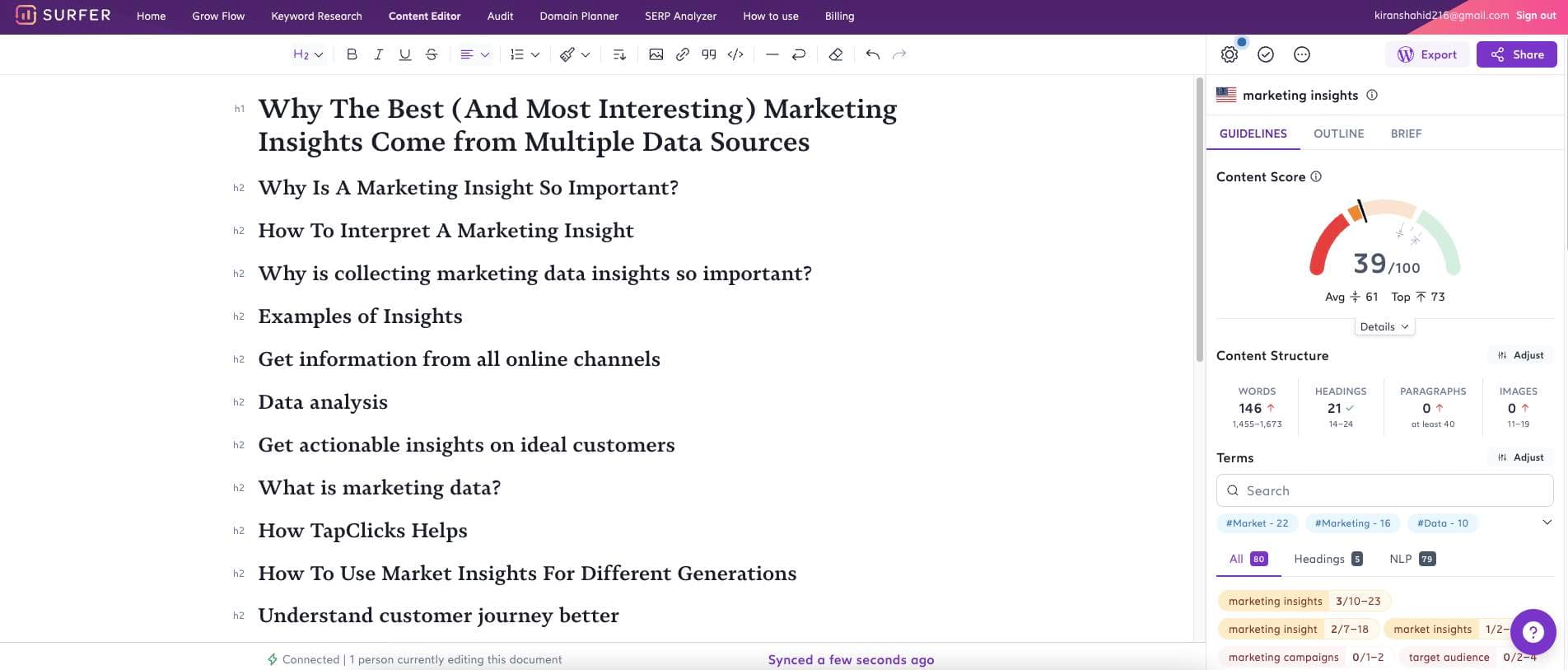
12. Multiple Content Formats on Multiple Channels
You’re looking for a new pizza place to try. You turn to Google to find the best places in your area. That seems like the only route to take, right?
Well, Gen Z is taking a different approach.

Of Gen Z, 40% prefer TikTok and Instagram to search over Google. While Google remains the world’s largest search engine, we’re seeing a shift.
Digital search is expanding as different discovery tools emerge. NLP algorithms have never been better, and users have more options to find the information they’re looking for.
Your target audience is everywhere, and you need to meet them at multiple touchpoints.
Create content for different platforms and target multiple channels and audiences simultaneously. Have one long-form blog post? Break it into two videos, five social posts, and two podcasts.
You’re investing a lot of time, effort, and money into your content assets. Repurpose content for multiple channels and squeeze the most out of it.
Set benchmarks and determine how your audience consumes content. Do younger people scroll less? Do older people watch more videos?
Optimize your content for different platforms and devices to reach the right audience. Ensure you’re not missing an opportunity to engage users across various channels.
13. User Experience
Even a one-second delay in mobile load times can reduce conversion rates by up to 20%.
Slow, laggy websites frustrate visitors and might prevent Google from crawling your pages.
Google’s Core Web Vitals is still crucial to check whether your website meets the speed and responsiveness requirements.
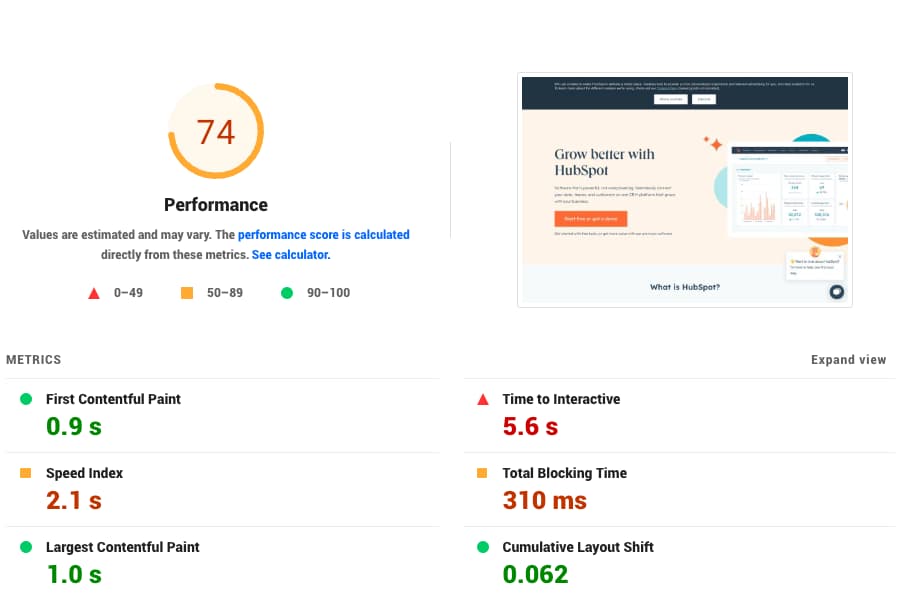
Reducing server response time, improving site navigation, eliminating render-blocking resources, and compressing images all play a role in improving your website load times.
Content quality and technical SEO go hand in hand. Optimize website performance on desktop and mobile to improve the experience for visitors and make it easy for Google to index your pages.
14. Author Authority
Adding another E to its E-A-T acronym hasn’t just increased the demand for unique insights. It’s also increased the demand for authoritative creators and writers.
AI content has never been this popular, and Google’s on a mission to ensure whoever’s behind the content is a qualified, experienced, and real person.
For starters, ensure experienced creators churn out the content. Have them write about their own experience and research instead of relying on AI-generated or outsourced content.
Then, build their profiles further with author bios. Here are a few aspects to focus on:
 Image source
Image source
After creating a bio, create an author page that compiles all of their work on your website. Link the author’s social media accounts and personal website so Google understands the creator is a real, authoritative person.
15. SEO Automation
Two threats loom over businesses in 2023: Google’s rapid algorithm updates and the recession.
Sustainable SEO growth strategies that allow you to respond to these changes and spend fewer resources on manual processes are key this year. Long-tail keywords that compete for lower search volumes are your friend.
Opt for automation tools like SEMRush to monitor and improve SERP rankings, analyze competitors, identify internal link opportunities, and monitor social media.
AI-driven technologies can help you supplement your SEO efforts and increase efficiencies by suggesting relevant keywords, content ideas, and backlinks.
These algorithms learn from experience and detect opportunities for optimization more quickly than manual processes.
Invest in automation to speed up SEO tasks and fill those time gaps with strategic decisions that help you navigate challenging times.
16. Local SEO
Ranking for general keywords is tempting. Why shouldn’t you go after keywords everyone is looking for?
That’s because it’s harder and harder to compete with global brands — unless you specialize in local SEO.
First, conduct a local SEO audit. Then, optimize your website for local, long-tail keywords, update your Google My Business and other local listings, add photos, and create content focused on topics related to city-specific or regional needs.
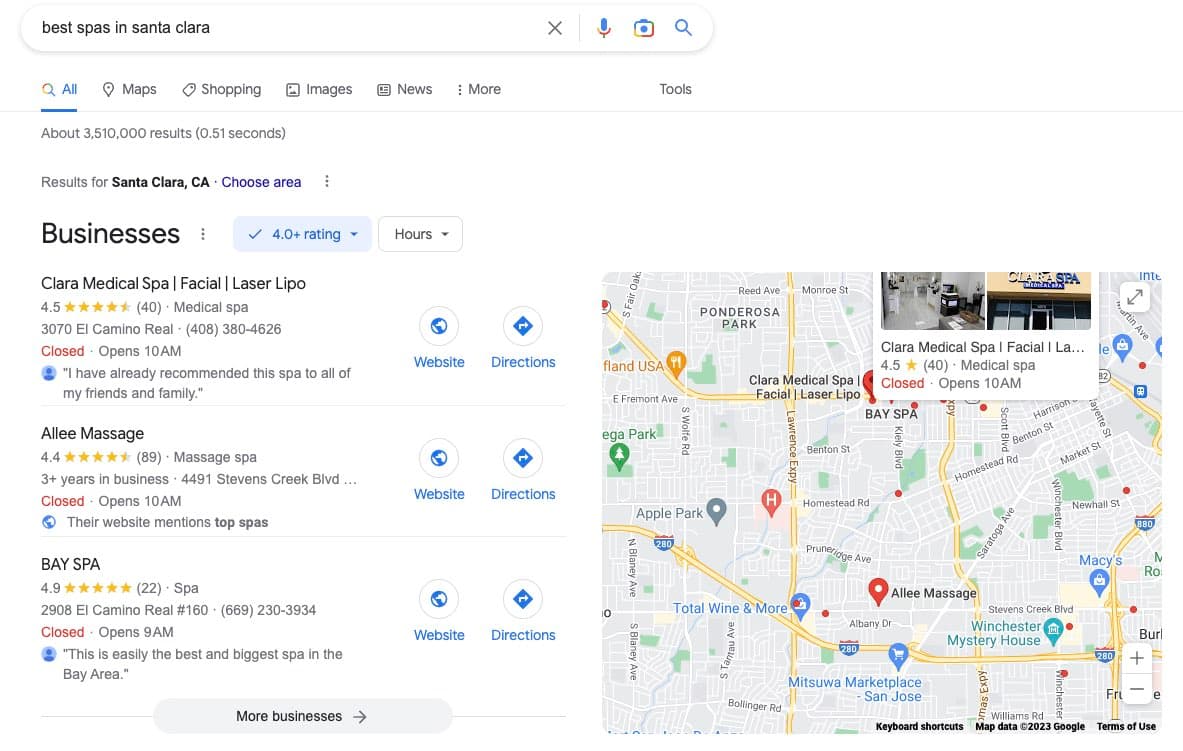
Of Millennials, 42% who perform a local search will visit the business most of the time. As customers become more frugal in 2023, they’ll value in-person visits even more to evaluate the quality of your product.
Online reviews are also one of the most critical factors that affect organic search results. In fact, 63.6% of consumers say they are likely to check reviews on Google before they visit a location.
Encourage customers to leave reviews on your website or through Google My Business.
And don’t forget mobile — 57% of local search queries are submitted using a mobile device or tablet. People want solutions, and they want them quickly. Mobile-friendly content directs users to your business when they need it the most.
17. Historical Optimization
Have you ever found an interesting article only to see it was published and updated three years ago?
That’s a missed opportunity.

Not updating your old blogs is like forgetting to water your plants. You’re missing out on tons of potential growth.
Historical optimization is the process of going back and updating your old blog posts. To start, you can conduct a content audit to identify old posts that need a revamp.
Focus on articles with declining traffic, high bounce rates, or ones that need fresh insights. Analyze content based on Google’s helpful content and see if you can add anything to make it more comprehensive and up-to-date.
Five aspects you can focus on:
- Stats. Add recent and relevant stats that support your claims and make your content more credible.
- Links. Remove broken links and identify internal and external links you can use to add value.
- Images. Replace outdated images or graphics with new ones that fit current design trends.
- Keywords. Look for missing high-intent keywords and use them naturally in your content.
- Expert insights. Identify content gaps that could benefit from quotes from subject matter experts.
18. Search Intent
The best content isn’t created for search engine crawlers. It’s created for your audience.
Search intent focuses on why people search and what they’re looking for when they type a query into the search engine.
What pain points were they trying to solve when they decided to type in a keyword?
Are they looking for product reviews, educational content, or simply curious about something specific?
Creating content that meets user search intent means creating content that answers their questions. It’s as simple as that.
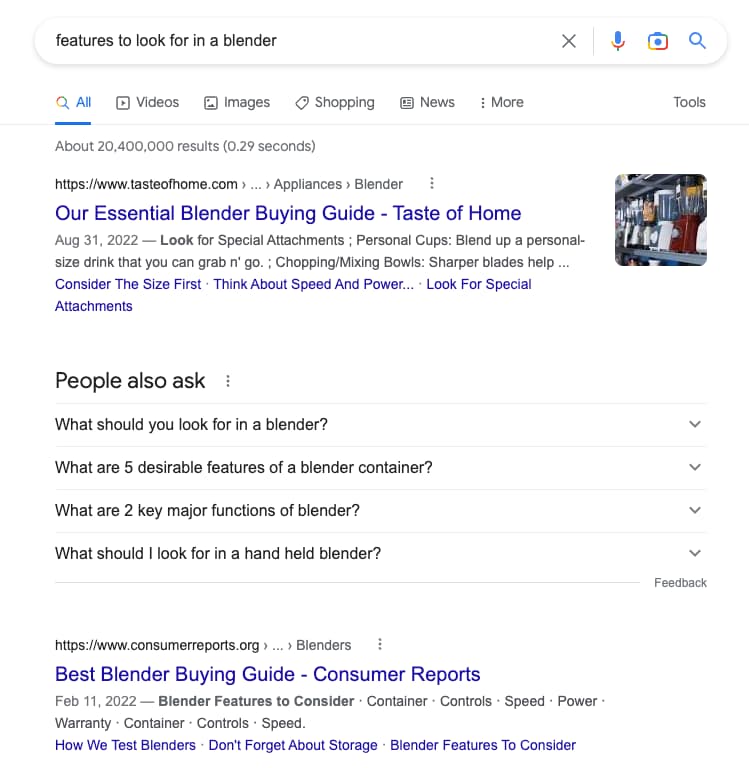
There are four types of search intent:
- Navigational. When users are looking for a specific website or page. For example, when they type “Walmart” into the search engine.
- Informational. When users are looking for more information on a topic, like when they type in “features to look for in a blender.”
- Transactional. When users are ready to buy something or take an action, like when they type in “order Black and Decker blender online.”
- Commercial. When users compare products or services before making a purchase, like when they type in “best blender under $100.”
Focus on content that matches users’ queries and expectations rather than just optimizing your content with the right keywords.
19. Link Building
Google’s December 2022 link spam update detects spammy links and penalizes websites with an unnatural link profile.
Its AI-powered SpamBrain will now “detect both buying and selling links and sites used for the purpose of passing outgoing links.”
What does this mean for SEO?
While link building can be a great way to improve your organic search visibility, focusing on quality rather than quantity is essential.
As Google gets better at detecting manipulative links using AI, link farms will become less effective. From Google’s perspective, neutralizing links algorithmically across the web is much more efficient than issuing manual actions.
Focus on white-hat, link-building tactics and avoid quick-fix solutions. Earn links by responding to media calls and position yourself as an industry expert.

Websites, such as HARO, Help a B2B Writer, and Terkel, have new opportunities daily. Give quotes drawn from firsthand experience that journalists can use straight away without further research.
20. Reverse Outreach
Link building can be tricky. Building backlinks without sending countless outreach emails that most people ignore is challenging.
That’s where reverse outreach comes in.
Reverse outreach is a content marketing technique invented by Brian Dean of Backlinko, who built 5,660 backlinks in 30 days. The technique involves creating buzzworthy content designed to be linked or shared.
Think listicles of stats, research, creative infographics, and helpful guides.
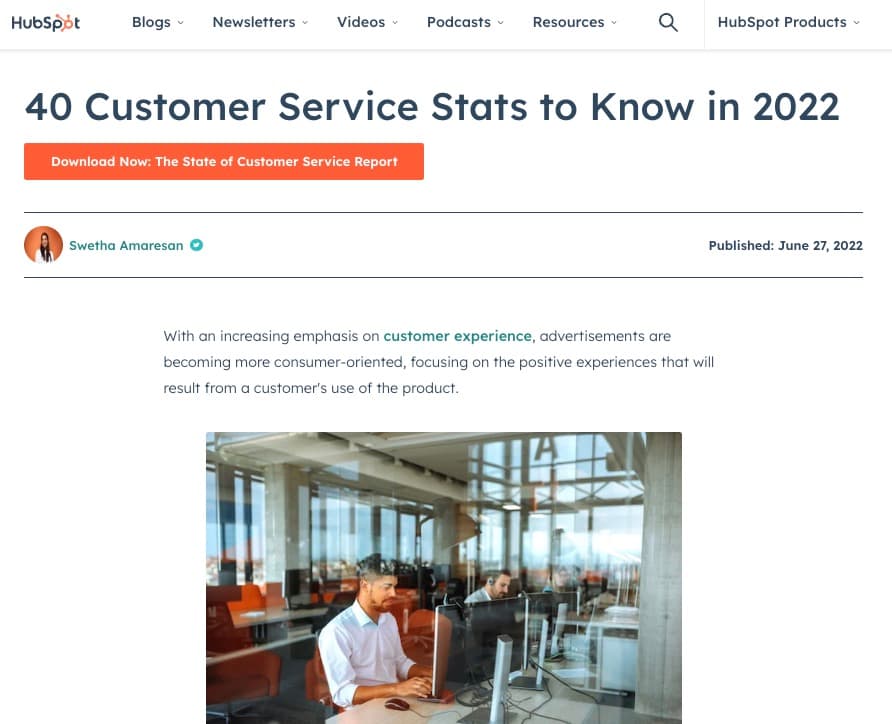
The key is to find a “journalistic keyword” other websites or blogs use to cover stories similar to yours. Then, create a narrative around that keyword, collect data, create the content, optimize it, and publish it.
Once you’ve published the content, the domino effect kicks in. High-authority sites link back to your site, boosting your domain authority and increasing organic website traffic.
21. Product SEO
 Today, 61% of US consumers begin their product hunt on Amazon. Google knows how fiercely it competes with Amazon in the ecommerce space, and it’s taking steps to ensure it doesn’t lose out.
Today, 61% of US consumers begin their product hunt on Amazon. Google knows how fiercely it competes with Amazon in the ecommerce space, and it’s taking steps to ensure it doesn’t lose out.
In 2022, Google made several changes to product search results, including adding Pros and Cons to product review snippets and expanding eligibility for Merchant Listing Experiences with Product Structured Data.
Add structured data to product pages to help Google Images and Lens detect and display your product information. Include other information, such as FAQs and drop-down menus, to make your product page richer.
Instead of optimizing for SEO alone, think of other helpful information that improves customer experience. Include product specifications, high-quality images, and 3D modeling to make it easier for customers to make decisions.
Lastly, focus on customer reviews. They’re extremely powerful in influencing purchase decisions.
Product reviews linking to multiple sellers may also boost rankings over reviews linking to one. When you’re giving customers the option to purchase from different vendors, you’re being helpful, and that’s what Google rewards.
22. Zero Volume Keywords
Search volume has traditionally been a key factor for deciding which keywords to target. But what if your target keyword has no search volume?
Zero search volume (ZSV) keywords are exactly that — they’re specific long-tail search queries that barely anyone searches for or tools don’t pick up on.
But because these keywords have a hyper-focus, they can help you attract more qualified leads and achieve higher conversion rates, especially at the bottom-of-the-funnel (BoFU) stage.
Keyword tools like Surfer and Ahrefs might not display the volume accurately. Here are a few checks that can help you identify whether a ZSV might generate traffic:
- Forum activity. Does the search for the ZSV keyword draw up forum or UGC activity? Are the results relevant? If yes, then people are interested.
- Incognito mode. Start typing the keyword on Google. Does Google autosuggest the remaining phrase? If yes, then people have searched for this.
- Related searches. Does Google display related searches on the results page? If so, the topic generates enough interest for Google to pull in related queries.
ZSV keywords provide small businesses, especially with little-to-no competition for search engine exposure. Less competition, a targeted approach, and the chance to build awareness in your niche can help you build traffic and rankings.
23. Image SEO
Image SEO has always been important, and for some niches, it can make or break a visitor’s decision to stay on your site.
Think about it: Would you trust a recipe blog where all the images are blurry and grainy? Would you be comfortable booking a hotel without photos of its amenities?
The answer is probably no.
Images make up 62.6% of all Google searches. Google understands how crucial visual results are to a user’s experience, and search results now feature image carousels and visual results more.
For example, a simple search for Bali on Google draws images of its map, pictures of different places to visit, and previews of hotels.
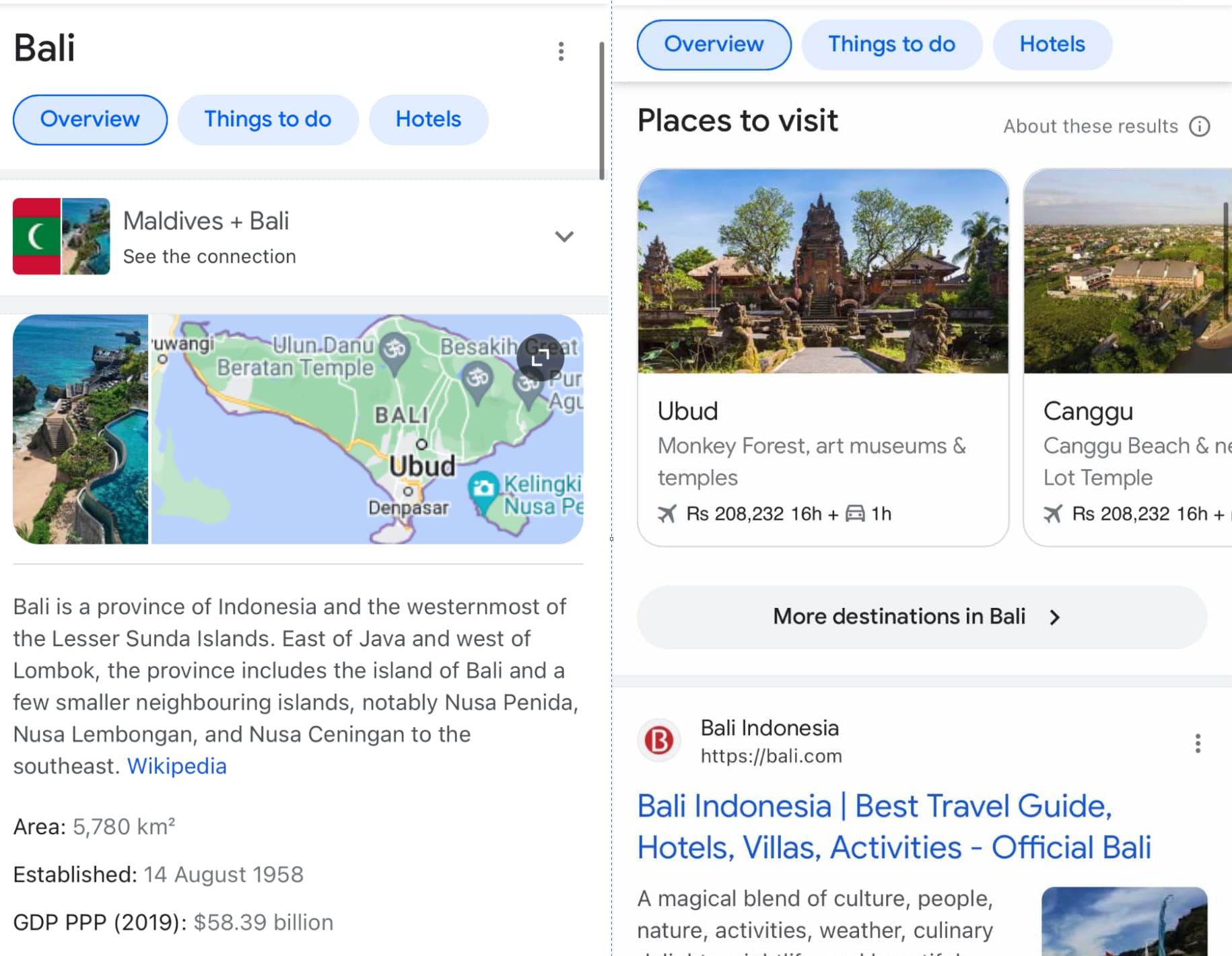 Google loves accessibility and sites optimized for visuals. To make sure your images are SEO-friendly, here are six tips:
Google loves accessibility and sites optimized for visuals. To make sure your images are SEO-friendly, here are six tips:
- Give each image a descriptive filename.
- Compress the file size to improve loading times.
- Add alt-text and descriptions to make them accessible.
- Use captions and titles in addition to the alt-text.
- Create an image sitemap to help Google crawl and index images.
- Include semantic keywords to help Google understand their context.
24. Structured Data Markup
The more organized your content is, the easier it is for search engines to read and evaluate it — which is why structured data markup remains important in 2023.
Structured data markup tags are added to web pages to provide additional context about the page’s content.
These tags help search engines understand the page better, which helps them display it for the right queries and provide the most helpful information to users.
Structured data also helps generate rich results, and these results stand out from regular search results and can help you get more clicks.
Rotten Tomatoes, for instance, added structured data to 100,000 unique pages and measured a 25% higher click-through rate (CTR) than those without. Nestle also measured an 82% higher CTR for rich results than regular search results.
Add relevant schema markups, such as recipes, videos, or Q&As, to help Google’s crawlers understand the context of your content. Here’s how you can ensure you’ve marked up your content correctly:
- Use schema.org vocabulary when creating tags.
- Test structured data using Google’s Rich Results test tool.
- Monitor errors with Google Search Console.
25. Interactive Content
You’ve probably come across boring, monotonous web pages filled with endless text. Most users won’t spend more than a few seconds reading them before they leave the page.
That’s why interactive content is so important. In simple terms, interactive content engages users and encourages them to interact with it.
Interactive content elevates an otherwise static page to draw more engagement, time on site, and potentially conversions.
According to 88% of marketers, interactive content helps brands differentiate themselves.
And why not?
Content such as quizzes, polls, games, surveys, or virtual reality is memorable for users. It captures your target audience’s attention and conveys valuable information in a fun, entertaining way.
Back to You
The only constant in the SEO world is changing. While it may feel like these changes are out of our control, so much is in our control — namely, how we react.
Start by watching trends and following the best practices in this article to help you navigate the changing landscape.
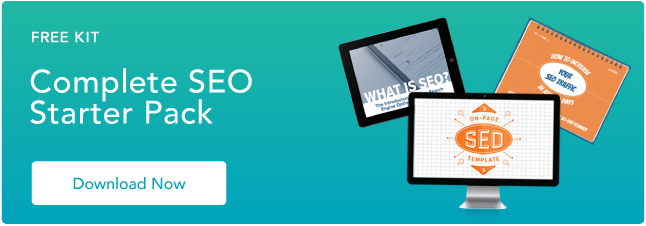






![]()

![Download Now: The 2023 State of Social Media Trends [Free Report]](https://i4lead.com/wp-content/uploads/2023/05/3dc1dfd9-2cb4-4498-8c57-19dbb5671820.png)

![Free Guide: How to Use AI in Content Marketing [Download Now]](https://i4lead.com/wp-content/uploads/2023/05/3e25e192-30c3-40c1-a7da-a4d054c9e157.png)
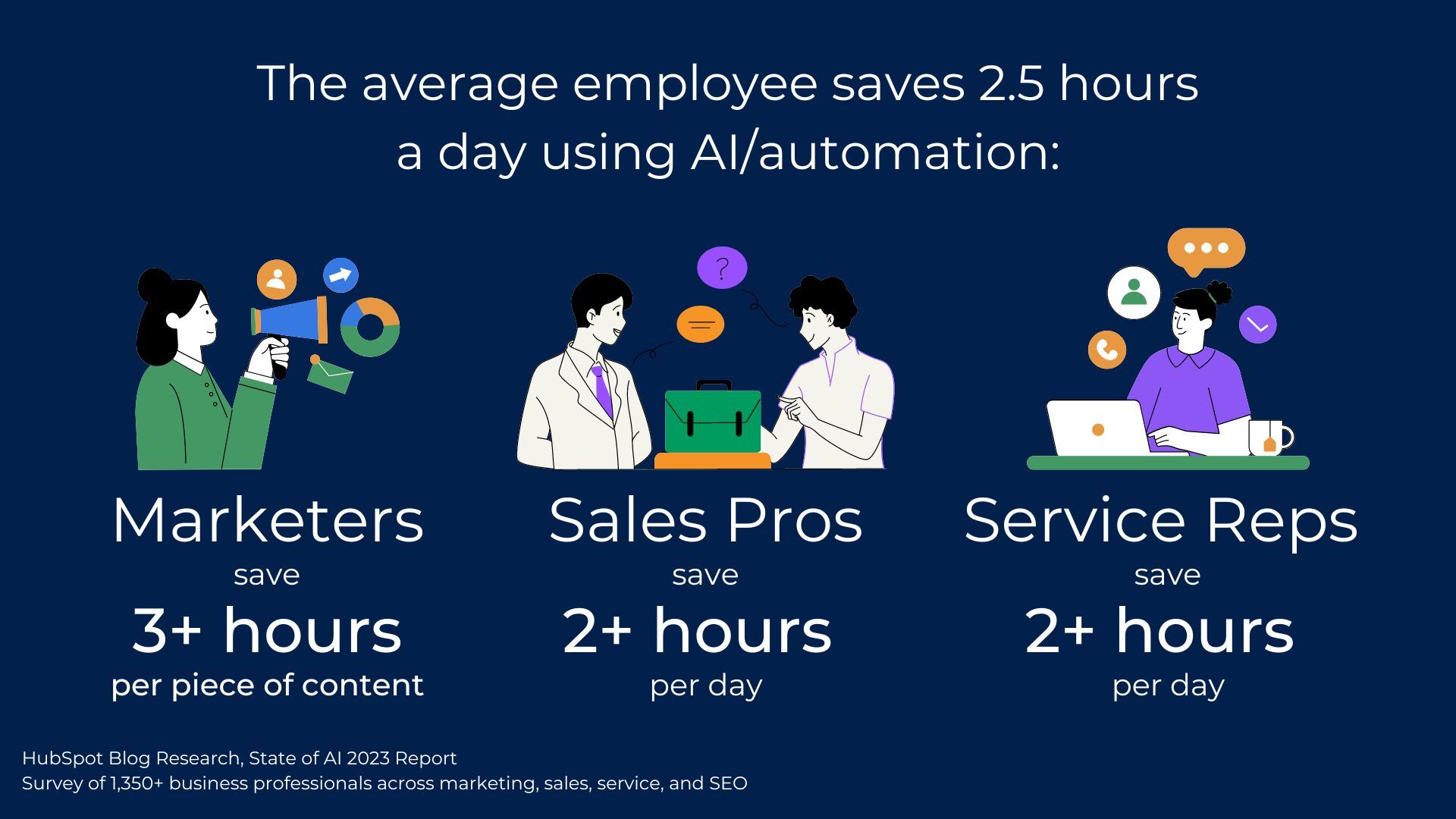
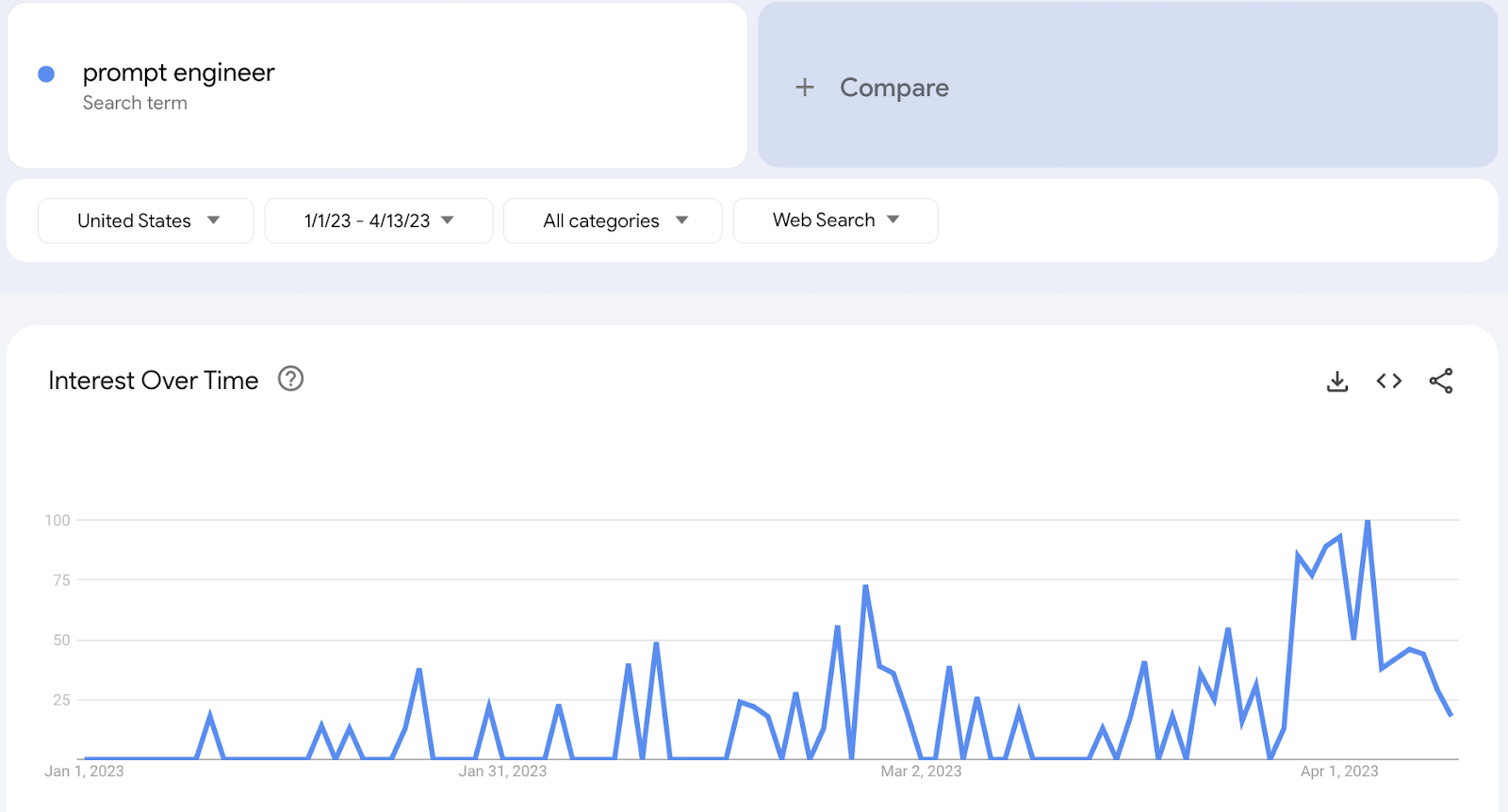
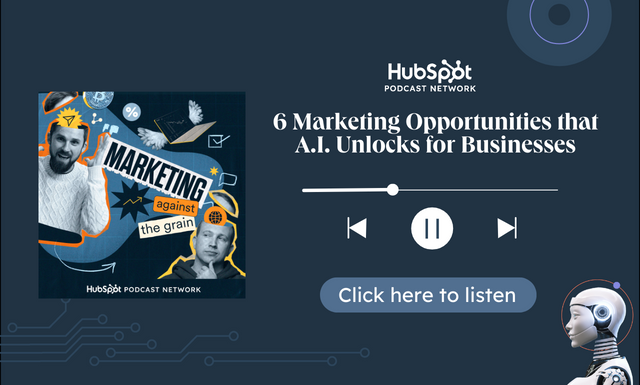


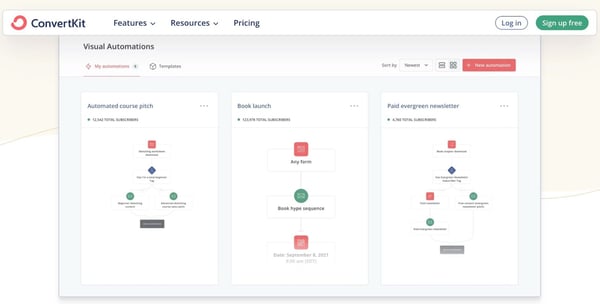
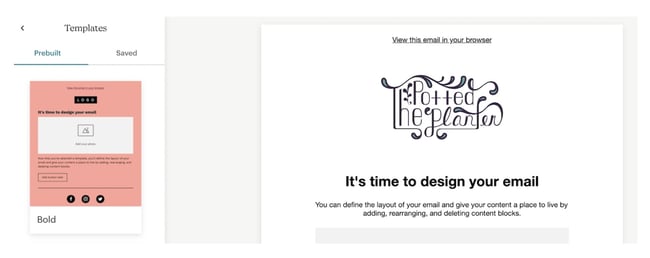
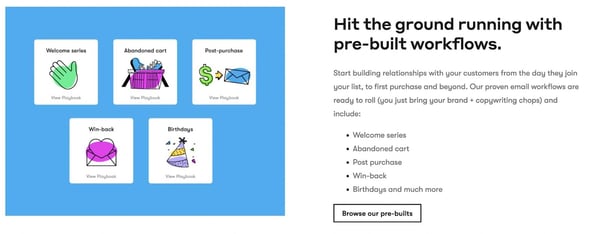
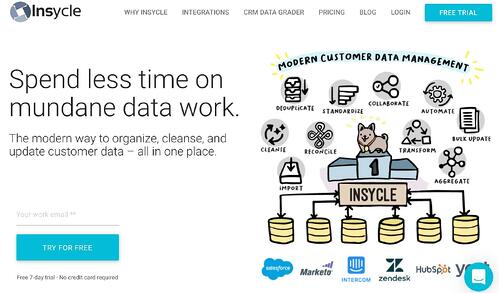
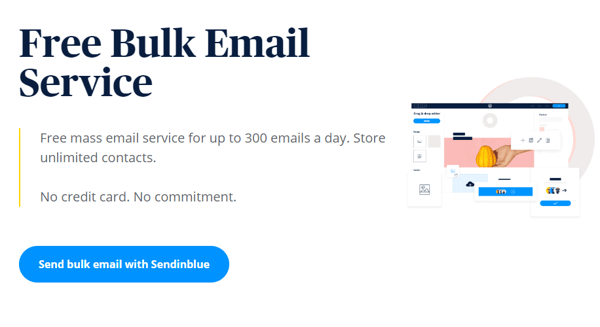
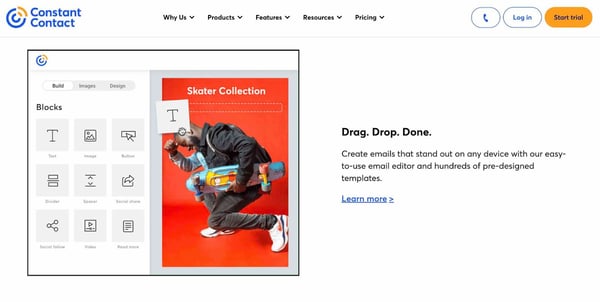
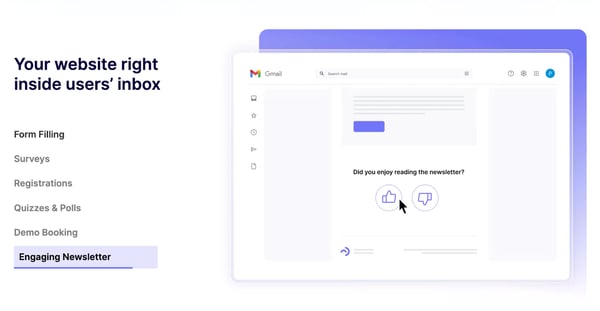
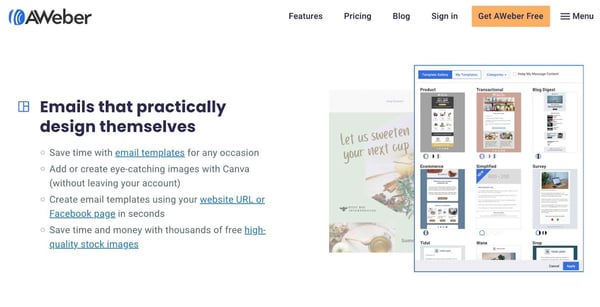



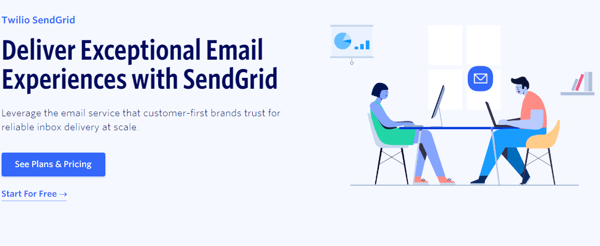
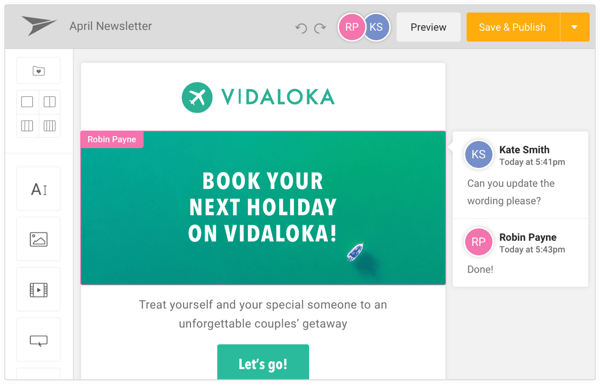

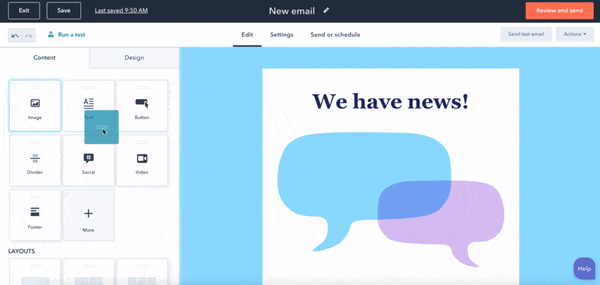
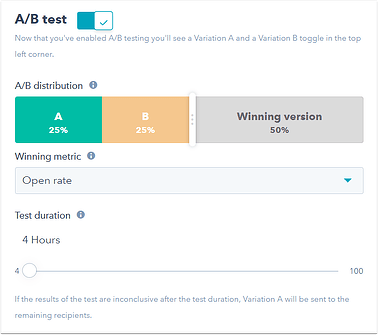
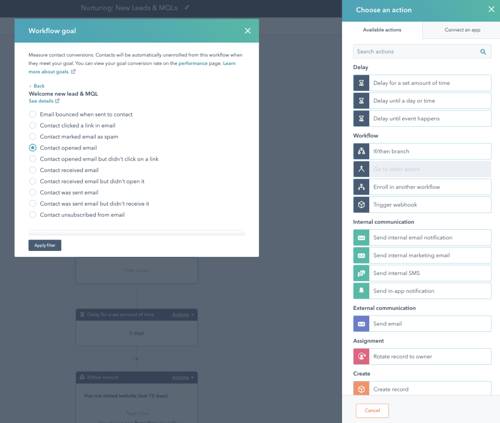
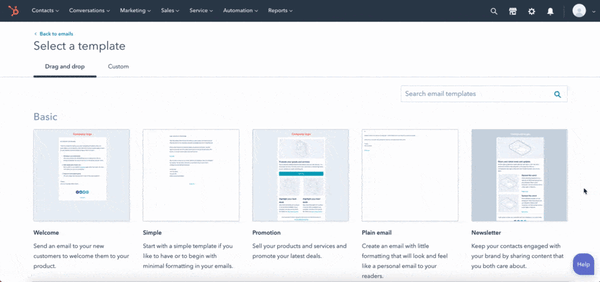
![Download Now: The 2023 State of Social Media Trends [Free Report]](https://i4lead.com/wp-content/uploads/2023/04/3dc1dfd9-2cb4-4498-8c57-19dbb5671820-1.png)
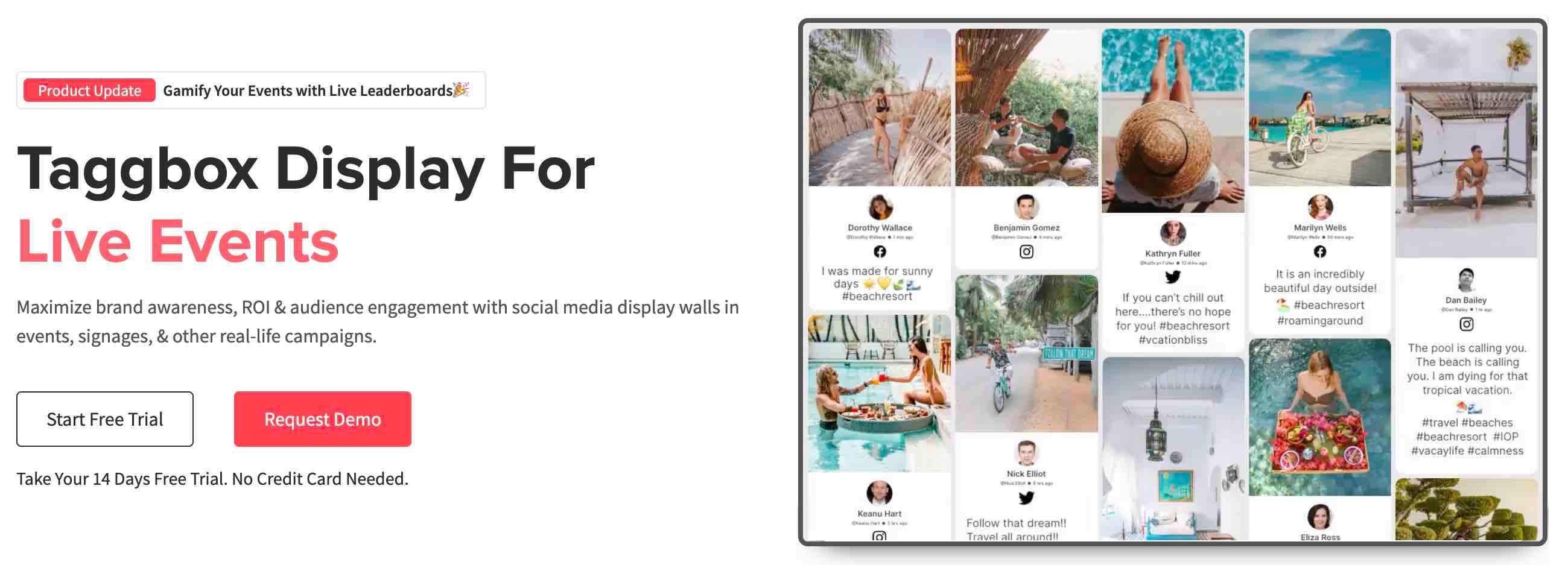
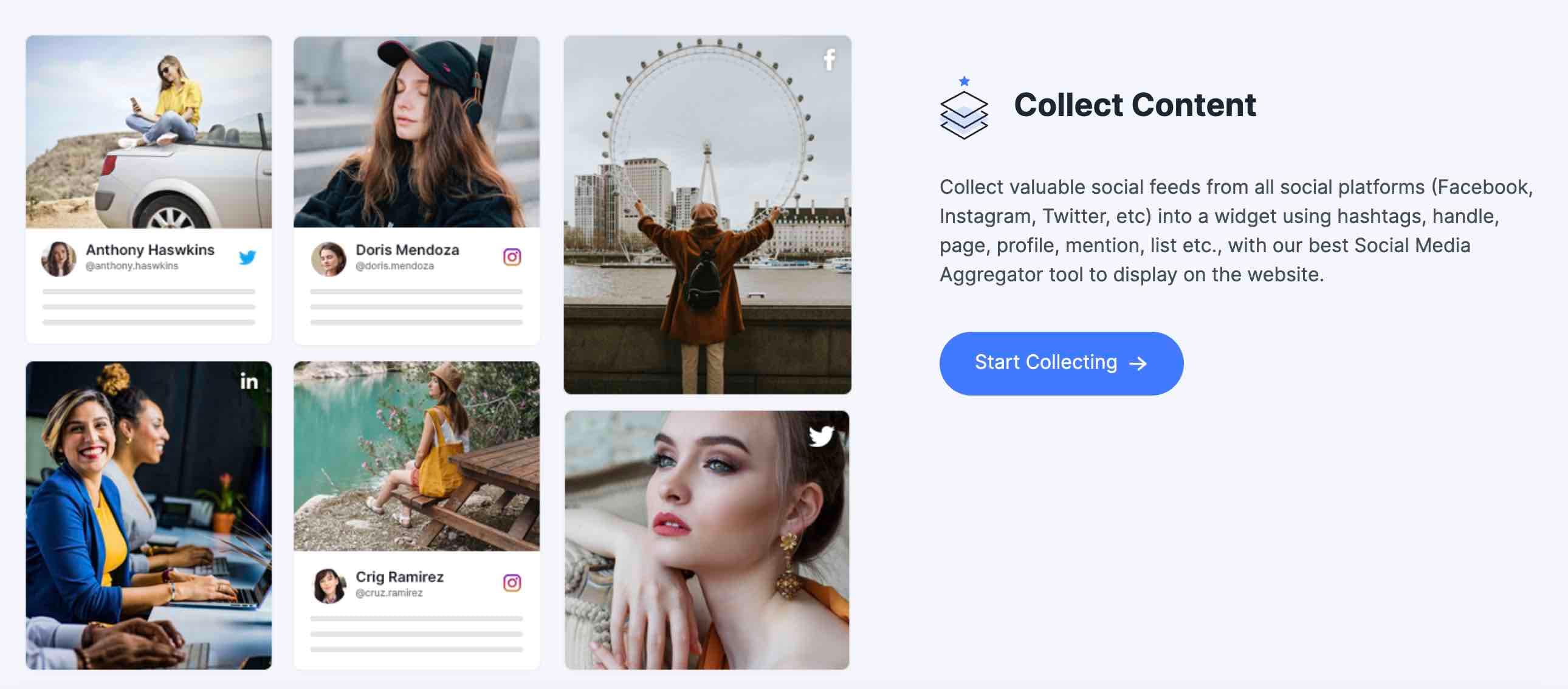
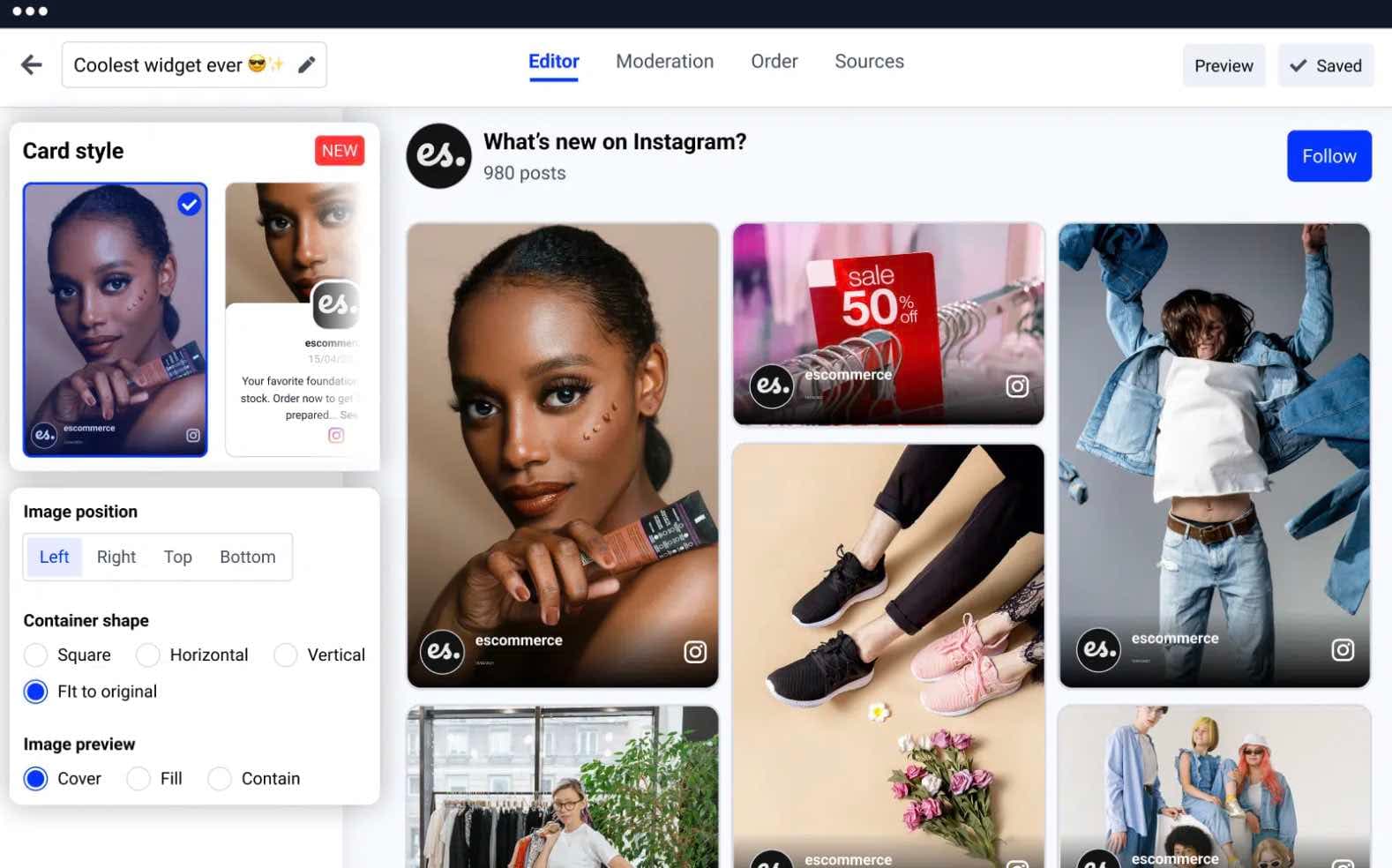

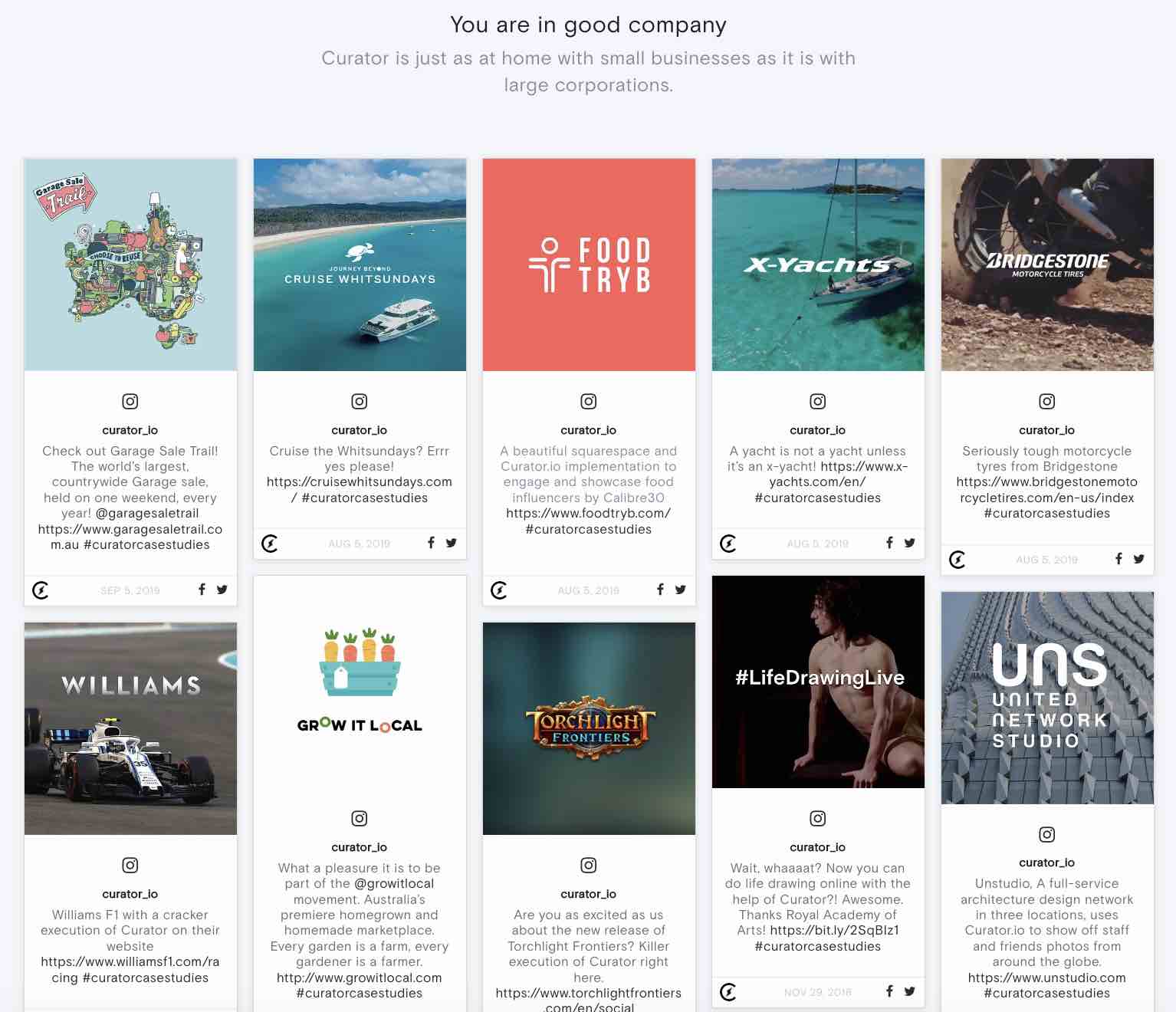
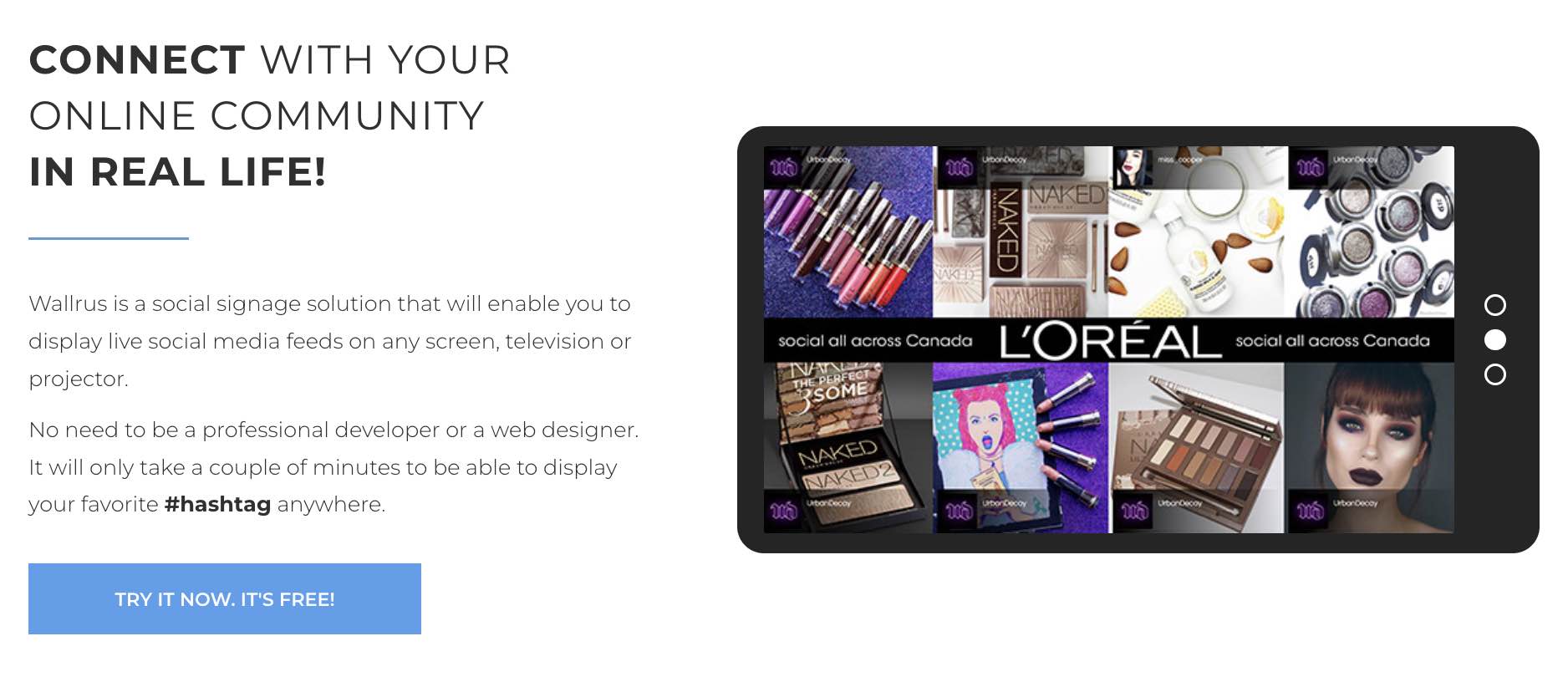

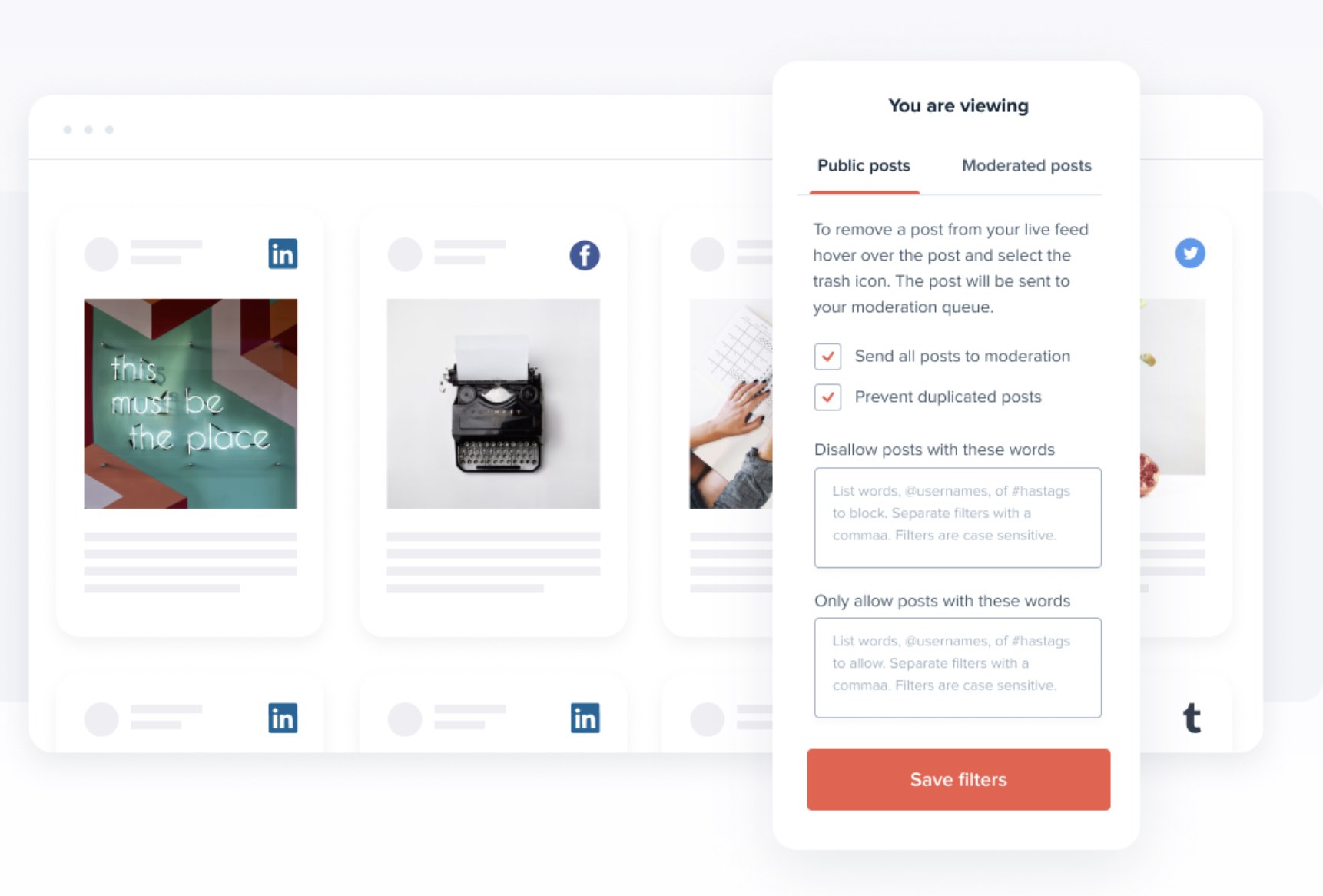
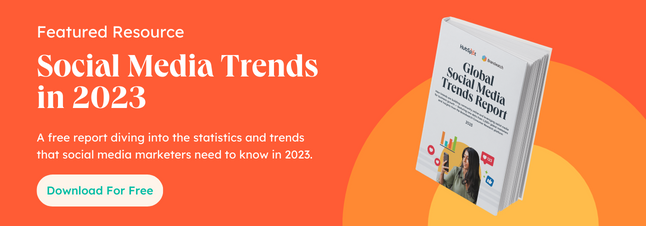

![→ Download Now: SEO Starter Pack [Free Kit]](https://i4lead.com/wp-content/uploads/2023/04/1d7211ac-7b1b-4405-b940-54b8acedb26e-1.png)



















 Today,
Today,  Google loves accessibility and sites optimized for visuals. To make sure your images are SEO-friendly, here are six tips:
Google loves accessibility and sites optimized for visuals. To make sure your images are SEO-friendly, here are six tips:
![→ Free Templates: How to Use YouTube for Business [Download Now]](https://i4lead.com/wp-content/uploads/2023/04/b33cfd44-133a-49e3-a943-086c5679d485.png)
.png?width=600&height=314&name=Copy of Facebook Shared Link - 1200x628 - Percentage Copy - Dark (2).png)
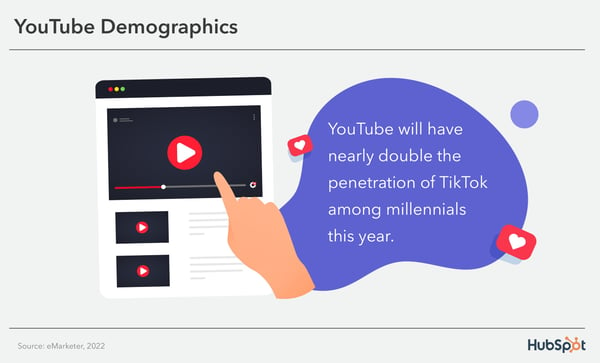
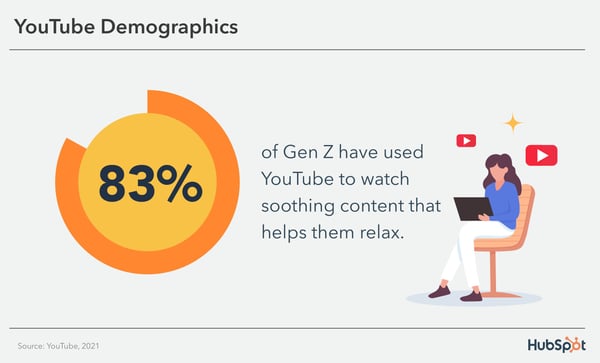
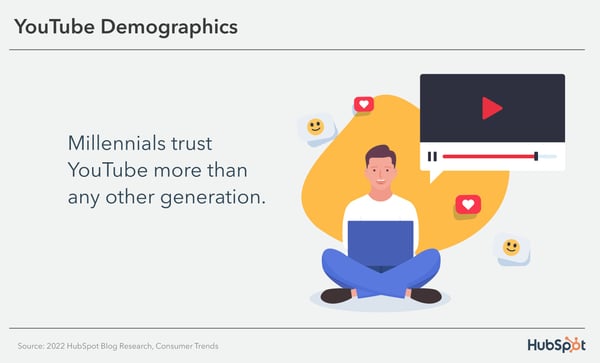
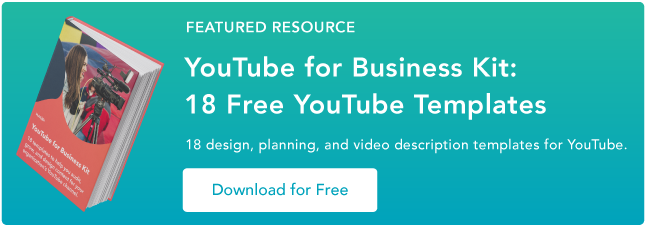

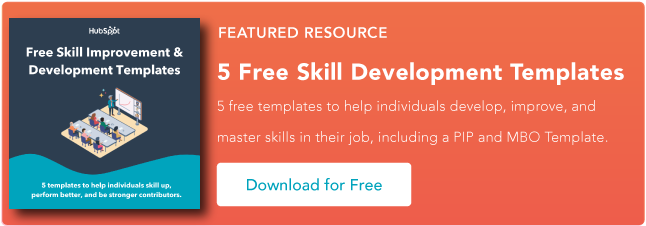
![Free Guide: How to Use AI in Content Marketing [Download Now]](https://i4lead.com/wp-content/uploads/2023/04/3e25e192-30c3-40c1-a7da-a4d054c9e157-9.png)

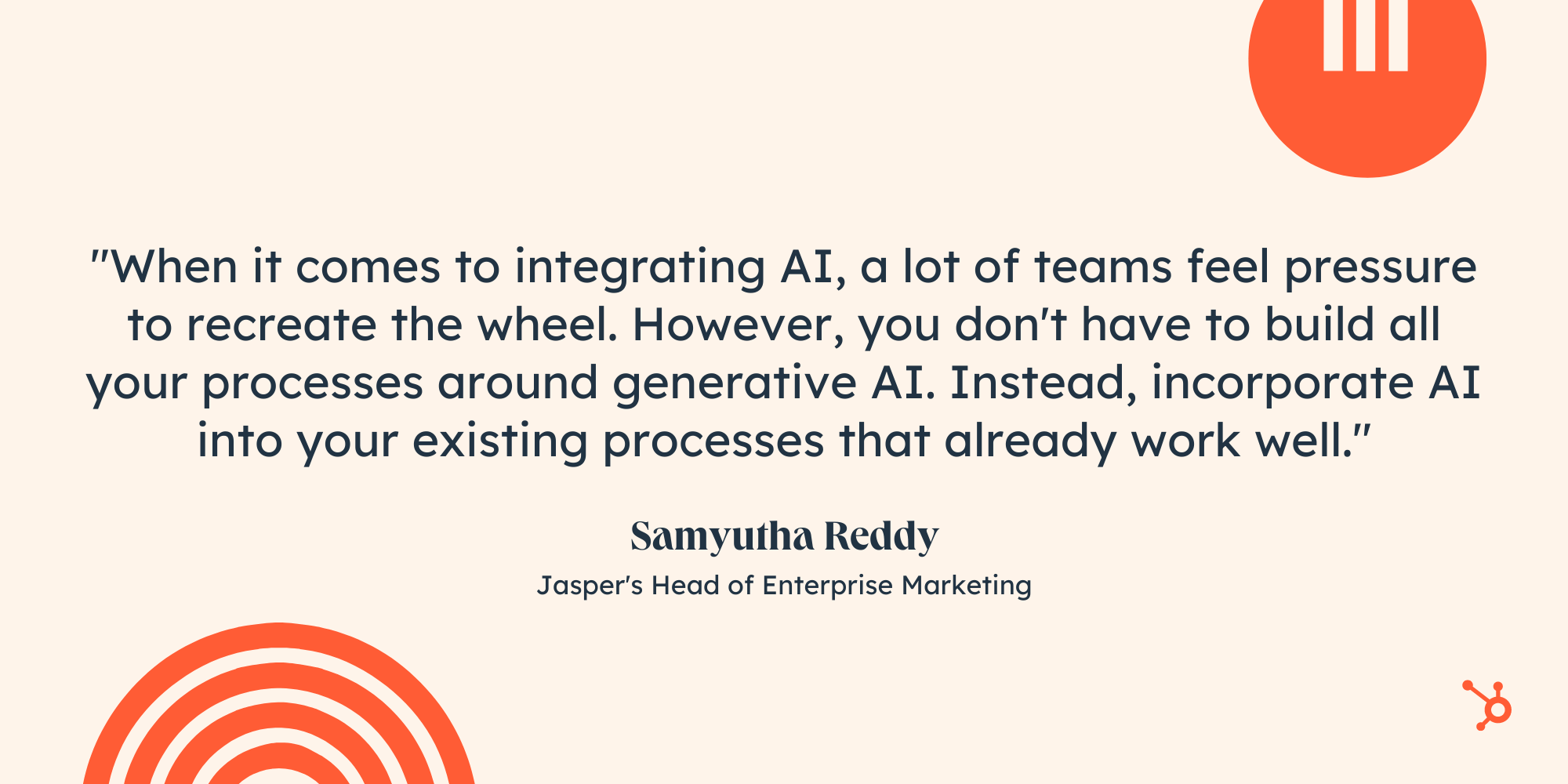

![Download Now: The State of U.S. Consumer Trends [Free Report]](https://i4lead.com/wp-content/uploads/2023/04/ebf9ec8e-a468-455a-943e-80aa4e6be694-4.png)



